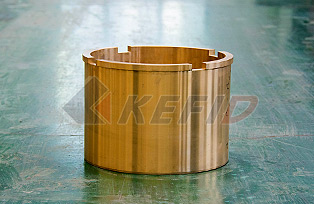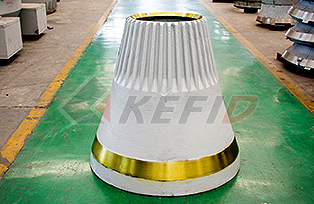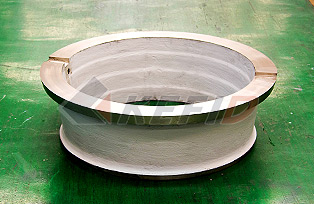SPARE PARTS
- Stationary Crushers
- Grinding Mill
- Washing & Screening

HST Cone Crusher
HST Series Single Cylinder Hydraulic Cone Crusher is a new and efficient crusher researched and designed autonomously on the base of our twenty years' experience in the crushing industry engaged in design, production, sales and service, combining with the development of modern industrial technology, and drawing advanced crusher technology from the United States, Germany and other countries.
-

SCRAPER SEAL
Material : high pressure polyethylene
Function : scraper seal is installed below the body of the movable cone, for preventing dust into the cone crusher.
-

LOWER FRAME BUSHING
Material : ZCuPb10Sn10
Function : Lower Frame bushing is installed between the eccentric sleeve and the frame body of HST cone crusher, for preventing the friction between frame and eccentric sleeve.
-

MANTLE
Material : ZGMn18Cr2
Function : Mantle is installed outside the movable cone. Stones will be crushed and squeezed in the cavity between the mantle and bowl liner. So they are abraded quickly.
-

UPPER PART OF THE BOWL LINER
Material : ZGMn18Cr2
Function : Bowl liner is installed on the fixed cone. Stones will be crushed and squeezed in the cavity between the bowl liner and mantle. So they are abraded quickly.
-

UPPER FRICTION DISC
Material : ZCuPb10Sn10
Function : Parts function: It is installed at the bottom of the main shaft. Together with lower friction disc and thrust bearing, they are designed for supporting the shaft and reducing friction. So they are abraded quickly. (It is also used for guiding the oil flow.)
DISMANTLE THE CONCAVE WALL:
1. Dismantle the conehead, loosen the pressure cap and locking stud bolts on the top, this will make the pressure cap and cone loss of locking.
2. Using special wrench, tap wrench with a heavy sledgehammer rotate it clockwise to release the pressure cap.
3. Hanging the worn liner worn away from the cone.
4. Remove any residual filler material on the cone.
5. Check the pressure cap and cone thread, remove burrs or nicks that may exist and clean the threads thoroughly. Coated the threads with grease or oil.
6. Coat the moving cone and the outer surface of the cone adjustment ring surface with a thin layer of oil.
INSTALL THE MANTLE:
1. Smear a circle of dry oil around the lower contact surface of cone and liner plate before the mantle falling to the cone.
2. Down the liner plate on the cone. Put pressure ring at the top of the liner.
3. The pressure cap is screwed down to near the top of the pressure ring.
4. Hitting the wrench with a sledgehammer. Tighten the cap so that the liner on the moving cone is centring and in place.
5. After tightening the pressure cap onto the cone, tighten bolts cap on the top.
6. After cooling the liner, fill the cavity below the liner with filler.
CHANGE THE WORN CONCAVE WALL:
1. Dismantle the adjustment ring from the support sleeve.
2. Clean the support units, adjustment ring and locking nut threads thoroughly.
3. Lift to feed box from the adjustment ring.
4. Dismantle the cotter that is used to fix locking plate on the wedge, and then hanging out the locking plate.
5. Hanging the adjustment ring away from the liner.
6. Remove all packing traces on the adjustment ring.
INSTALL THE CONCAVE WALL:
1. Place the concave wall on the appropriate skids, ensuring complete contact after adjusting ring was put on the liner. Coat the adjustment ring inside lightly with oil.
2. Place the adjusting ring on the concave wall downward after installing the supporting ring in the adjusting ring.
3. Firstly, install each square head bolts, ball nuts and wedges.
4. Alternately screw up each nuts in symmetrically way, until all the wedges pressed into the bowl spiral line. Fill the padding into the filling cavity which is on the back of the concave wall.
